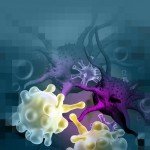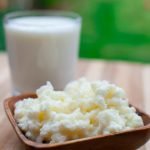Trigger Point Therapy
 Trigger points are perhaps one of the most common causes of musculoskeletal pain. Nearly every adult has them, for a variety of reasons. Trigger points are defined as localized, discrete areas within a muscle that are hyperirritable. They may be painful while the muscle is at rest, while in motion or both. The pain they produce is felt locally and can be produced in a predicted, referred pattern. Trigger points can also cause an amazingly wide variety of autonomic symptoms and motor dysfunction depending on their location. Referred pain is a hallmark of a true trigger point; a painful spot in muscle that does not elicit a referred pain pattern is termed a tender point. Tender points only elicit pain at their site, and typically only occur at muscle insertion areas, rather than in the muscle belly (Hopwood and Abram, 1994).
Trigger points are perhaps one of the most common causes of musculoskeletal pain. Nearly every adult has them, for a variety of reasons. Trigger points are defined as localized, discrete areas within a muscle that are hyperirritable. They may be painful while the muscle is at rest, while in motion or both. The pain they produce is felt locally and can be produced in a predicted, referred pattern. Trigger points can also cause an amazingly wide variety of autonomic symptoms and motor dysfunction depending on their location. Referred pain is a hallmark of a true trigger point; a painful spot in muscle that does not elicit a referred pain pattern is termed a tender point. Tender points only elicit pain at their site, and typically only occur at muscle insertion areas, rather than in the muscle belly (Hopwood and Abram, 1994).
Trigger points can also cause a muscle to weaken before it begins causing pain. This leads into the pathology of trigger points, in that now the muscle is painful to move, and it becomes static and stagnant. Microcirculation becomes impaired, disallowing delivery of oxygen and nutrients and removal of waste products. Further, when muscles are not moved through their range of motion, the lymphatics surrounding the area are not stimulated, possibly further compounding the problem. Adjacent muscles now begin to accommodate for the impaired range of motion in the affected muscle; they can become overworked and develop secondary trigger points themselves.
Causes
The formation of trigger points is commonly caused by biomechanical factors that stress muscles, such as repetitive microtrauma or acute trauma. These injuries can be caused by physical trauma, poor posture, sporting events or from antalgic protection of nearby joint dysfunction or injury. Other notable inciting factors include lack of mobility and motion of the muscle, and mineral deficiency (Han and Harrison, 1997) Magnesium is a mineral that is commonly deficient in the diet; it acts as a mild calcium channel blocker and thereby as a muscle relaxant. It is author Dr. Barker’s opinion that our calcium-dominated diets do not allow for adequate magnesium intake, which perpetuates muscle stiffness and pain.
Clinical Presentation
Patients may describe persistent pain that negatively affects the range of motion of the affected muscle. Trigger points appear most often in the postural muscles of the neck, back and pelvic girdle (Simons et al., 1999). Patients who run or spend a lot of time on their feet will have them in the gluteus muscles, gastrocnemius and quadriceps. Pain referred from myofascial trigger points does not follow a simple pattern and may not always occur within the same dermatome, myotome or sclerotome (Simons et al., 1999). Trigger points in the neck may be the cause of headaches and eye pain, and can mimic bursitis and tendonitis in the legs. Diagnosis of trigger points rests on two distinct characteristics: 1) when pressed, a radiant pain pattern emerges; and 2) when an identified trigger point is “strummed,” a twitch response will be elicited. This is achieved by snapping one’s fingers perpendicularly across the trigger point. Typically, the trigger point will twitch briefly. Trigger points may also be easily identified in a person not complaining specifically about them during the course of palpation for other musculoskeletal problems. Direct communication with the patient is necessary during the course of diagnosis to ensure that a nodular area of muscle is indeed painful. More often than not, patients are painfully aware of the exact moment a trigger point is palpated. On occasion, patients will not complain of pain at the area of palpation but will note pain in another area of the body; this is the stereotypical referred pain pattern. Cross checking pain referral patterns with reference maps is helpful for the clinician to accurately identify trigger point locations. Interestingly, these reference maps exist because of the similarity in referral patterns across the spectrum in nearly all people with trigger points.
Treatment Technique
Numerous techniques are available for the treatment of trigger points, depending on their anatomical location, patient tolerance, patient contraindications, and chronological age of the trigger point. Manual therapy/treatment can be taught to the patient for purposes of ongoing care and pain management; however, it is Dr. Barker’s opinion that the most effective treatment for trigger points involves injection. Injection has become a widespread accepted technique for treatment, and pain relief is often immediate compared with other therapies.
Injection technique for trigger points is straightforward; however, it is a manual skill that requires hands-on training from an experienced practitioner. Additionally, trigger point injections are a relatively high-risk procedure, and the practitioner must be vigilant concerning several precautions such as anatomical location as well as vasovagal reactions, allergic reactions to injectants and coagulative disorders in patients, to name a few. Fortunately, training for injection therapy of trigger points is widely available.
Injections into muscle may be done with or without injectant; so-called ”dry needling” involves only a needle. Post-injection soreness is an issue for patients who have received dry needle injection techniques; this pain differs from that generated by the trigger point itself and may last several days.
Many clinicians prefer to use some form of injectant; the use of corticosteroids in trigger point injections has fallen out of favor, yet some clinicians still use them. Interestingly, one recent study compared the efficacy of dry needling to injection with procaine or lidocaine (Hong, 1994). Both forms of injection were deemed equally effective; however, patients treated with dry needling had post-injection soreness of significantly greater intensity and longer duration than those treated with a local anesthetic.
Procaine is preferred over lidocaine due to several reasons: Procaine is metabolized locally into diethylaminoethanol (DEAE) and para-amino benzoic acid (PABA); DEAE is thought to increase acetylcholine while PABA is part of the folic acid molecule. So in this sense, procaine serves as a nutritive to damaged muscles. Lidocaine is longer acting and metabolizes in the liver; the possibility for achieving lidocaine toxicity is much greater than that of procaine, especially in the event of multiple injections in a short time period. Having experienced previous adverse reactions to local anesthetics is a contraindication to using either one of these injectants.
Local anesthetics also have the effect of blocking sodium channels, thereby preventing depolarization. This has the overall effect of decreasing muscle hyperirritability in the local area of injection. Other injectants include vitamins B1, B6 or B12, homeopathics, sterile water or magnesium sulfate. Each one has its considerations; however, the clinical success of trigger point therapy is probably most dependent on operator technique rather than the injectant.
Other Considerations
As mentioned previously, proper training is a must. Potentially serious and life-threatening complications may ensue from improper technique (i.e., bilateral pneumothoraces). Recognition of emergencies and having an emergency protocol are important. Oxygen, first aid and emergency services are all considerations for clinicians that perform injection procedures. Vasovagal reactions can occur some time after the injection; therefore, patients should be monitored for at least 20 minutes following the procedure, should an adverse event occur.
Acupuncture and Trigger Points
The use of acupuncture in treating myofascial pain dates back thousands of years. Acupuncture utilizes much thinner needles than typical injection techniques in treating trigger points; both meridian points and ah shi points are stimulated for treatment. The Chinese have historically treated active and referral pain patterns using the ah shi points, which literally translate to “ouch” points. Ah shi points can be likened to trigger points in Western terminology and, in fact, many acupuncture points coincide with the trigger points identified by Janet Travell, MD in her book, Myofascial Pain & Dysfunction: The Trigger Point Manual.
The purpose of using acupuncture in the treatment of myofascial trigger points is to produce fasciculations. These twitches result in relaxation of shortened, knotted muscle fibers, and therefore reduce pain. A widely used technique is to pinch the muscle so that the banded muscle fibers are between the fingers and thumb of one hand while the other hand needles into the trigger point. The fasciculations are observable and the patient will usually report a feeling of intense pressure and then a release of the muscle. Manipulation of the needle with strong stimulation must be used to achieve the desired result. The patient can actually feel the muscle “jump” due to alternating involuntary contraction and relaxation of the muscle. It causes an uncomfortable sensation during the muscular stimulation and feels like mild soreness afterwards.
Acupuncture is often utilized for acute and chronic pain in the Western world, and is an excellent principle therapy or adjunct to other forms of trigger point therapies. The benefit is that the patient receives the desired result of decreasing muscular tension and pain with minimal invasiveness and without side effects. Most patients with acute pain will notice a significant reduction in pain after one to three treatments, while a series of four to six treatments is more effective in treating chronic pain syndromes.
Jason Barker, ND is a 2001 SCNM graduate. He also completed a two-year residency at NCNM. He earned a certificate in clinical research from Oregon Health & Sciences University, and serves as a clinical consultant to the nutraceutical and sports medicine industry. Dr. Barker lectures internationally on natural medicines, has been interviewed on radio programs across the country and has written numerous articles on natural therapeutics.
Sara Pavone, DiplOM, LAc, CH graduated from a four-year masters degree program granted by Southwest Acupuncture College in Boulder, Colo. She holds an undergraduate degree in biochemistry, and completed a post-graduate residency in China at the prestigious Beijing Traditional Chinese Medical Hospital. She is board certified as a diplomate of oriental medicine in acupuncture and Chinese herbology by the National Certification Commission for Acupuncture and Oriental Medicine.
References
Hopwood MB, Abram SE: Factors associated with failure of trigger point injections, Clin J Pain 10:227-34, 1994.
Han SC, Harrison P: Myofascial pain syndrome and trigger-point management, Reg Anesth 22: 89-101, 1997.
Simons DG et al: Travell & Simons’ Myofascial Pain and Dysfunction: The Trigger Point Manual (2nd ed). Baltimore, 1999, Lippincott Williams & Wilkins, pp. 5, 11-93.
Hong CZ: Lidocaine injection versus dry needling to myofascial trigger point. The importance of the local twitch response, Am J Phys Med Rehabil 73:256-63, 1994.
Alvarez DJ, Rockwell PG: Trigger points: diagnosis and management, Am Fam Physician Feb. 15;65(4):653-60, 2002.








